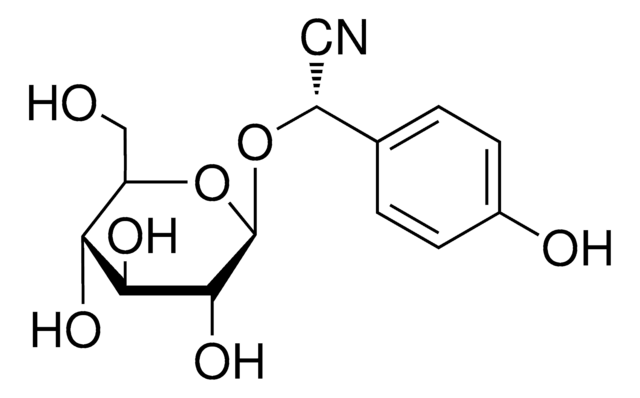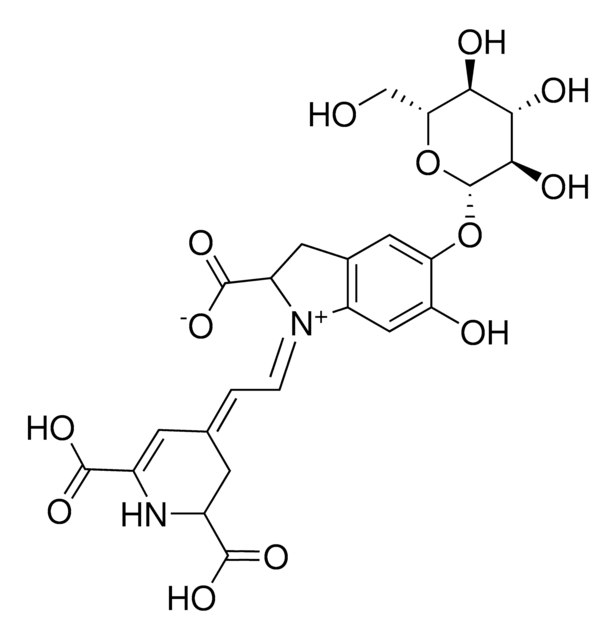SMB00173
Prunasin
≥90% (LC/MS-ELSD)
Sinonimo/i:
D-Mandelonitrile β-D-glucoside
About This Item
Prodotti consigliati
Livello qualitativo
Saggio
≥90% (LC/MS-ELSD)
Stato
solid
applicazioni
metabolomics
vitamins, nutraceuticals, and natural products
Temperatura di conservazione
−20°C
Stringa SMILE
OCC1OC(OC(C#N)c2ccccc2)C(O)C(O)C1O
InChI
1S/C14H17NO6/c15-6-9(8-4-2-1-3-5-8)20-14-13(19)12(18)11(17)10(7-16)21-14/h1-5,9-14,16-19H,7H2
ZKSZEJFBGODIJW-UHFFFAOYSA-N
Cerchi prodotti simili? Visita Guida al confronto tra prodotti
Categorie correlate
Descrizione generale
Avvertenze
Danger
Indicazioni di pericolo
Consigli di prudenza
Classi di pericolo
Acute Tox. 3 Oral - Repr. 1B
Codice della classe di stoccaggio
6.1C - Combustible acute toxic Cat.3 / toxic compounds or compounds which causing chronic effects
Classe di pericolosità dell'acqua (WGK)
WGK 3
Punto d’infiammabilità (°F)
Not applicable
Punto d’infiammabilità (°C)
Not applicable
Scegli una delle versioni più recenti:
Certificati d'analisi (COA)
Non trovi la versione di tuo interesse?
Se hai bisogno di una versione specifica, puoi cercare il certificato tramite il numero di lotto.
Possiedi già questo prodotto?
I documenti relativi ai prodotti acquistati recentemente sono disponibili nell’Archivio dei documenti.
Il team dei nostri ricercatori vanta grande esperienza in tutte le aree della ricerca quali Life Science, scienza dei materiali, sintesi chimica, cromatografia, discipline analitiche, ecc..
Contatta l'Assistenza Tecnica.








